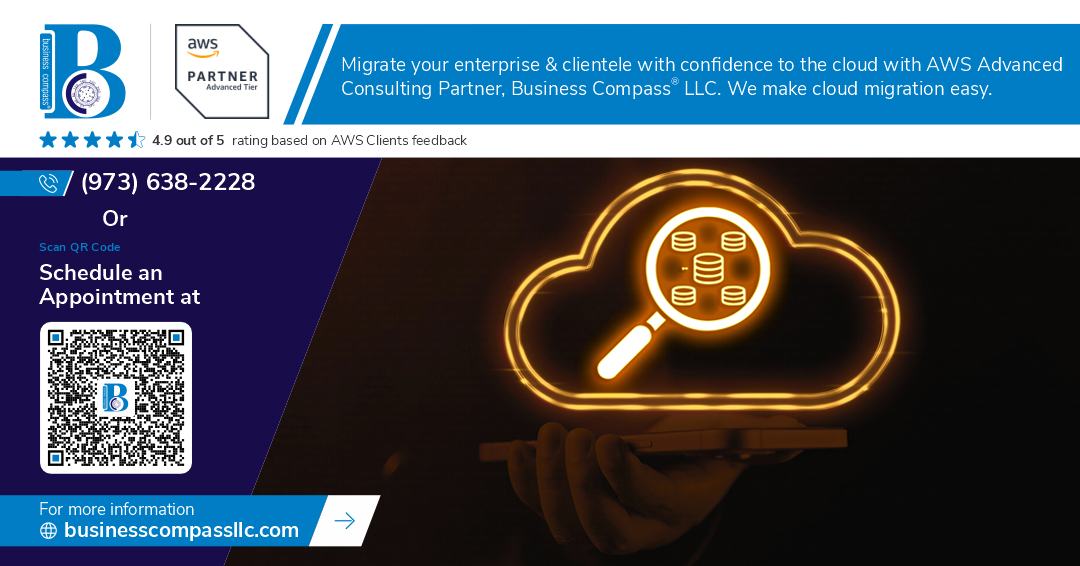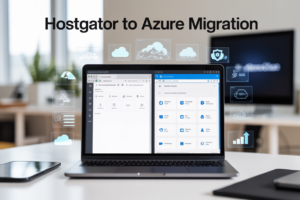In today’s data-driven world, businesses are drowning in a sea of information. 🌊 But are they truly harnessing its power? The key lies in choosing the right data storage and management solution. From the tried-and-true Data Warehouse to the cutting-edge Data Fabric, the options can be overwhelming. How do you navigate this complex landscape and find the perfect fit for your organization?
Enter the world of modern data architectures: Data Warehouse, Data Mart, Data Lake, Data Mesh, and Data Fabric. Each offers unique advantages, but understanding their differences is crucial. Are you missing out on valuable insights because you’re using the wrong solution? It’s time to demystify these concepts and unlock the full potential of your data.
In this comprehensive guide, we’ll dive deep into each of these data storage solutions, exploring their strengths, weaknesses, and ideal use cases. We’ll start by understanding the fundamentals of data storage, then journey through the evolution from traditional Data Warehouses to the distributed approach of Data Mesh and the interconnected world of Data Fabric. By the end, you’ll have a clear picture of how to choose the right solution for your specific needs. Let’s embark on this data discovery adventure! 🚀
Understanding Data Storage Solutions
A. Definition and purpose of each solution
Data storage solutions are essential components of modern data management strategies. Let’s explore the definitions and purposes of key data storage solutions:
| Solution | Definition | Purpose |
|---|---|---|
| Data Warehouse | Centralized repository for structured data | Support business intelligence and decision-making |
| Data Mart | Subset of a data warehouse focused on specific business area | Provide quick access to department-specific data |
| Data Lake | Large-scale repository for raw, unstructured, and semi-structured data | Enable big data analytics and machine learning |
| Data Mesh | Decentralized architectural approach to data management | Empower domain-specific teams with data ownership |
| Data Fabric | Integrated layer of data and connecting processes | Unify disparate data sources and facilitate data access |
B. Key characteristics and features
Each data storage solution has unique characteristics that set it apart:
-
Data Warehouse:
- Structured data schema
- ETL processes for data integration
- Optimized for complex queries and reporting
-
Data Mart:
- Focused on specific business function or department
- Smaller and more agile than data warehouses
- Faster query performance for targeted analytics
-
Data Lake:
- Schema-on-read approach
- Supports all data types (structured, semi-structured, unstructured)
- Scalable and cost-effective storage
C. Typical use cases and applications
Different data storage solutions cater to various business needs:
-
Data Warehouse:
- Enterprise-wide reporting and analytics
- Historical data analysis
- Regulatory compliance and auditing
-
Data Mart:
- Department-specific reporting (e.g., sales, finance)
- Ad-hoc analysis for business units
- Quick access to frequently used data
-
Data Lake:
- Big data analytics and machine learning
- IoT data processing
- Data exploration and discovery
Now that we’ve covered the fundamentals of these data storage solutions, let’s delve deeper into each one, starting with the traditional powerhouse: the Data Warehouse.
Data Warehouse: The Traditional Powerhouse
Structured data management
Data warehouses excel in managing structured data, providing a centralized repository for organized information. They employ a schema-on-write approach, ensuring data consistency and integrity from the outset. This structured approach allows for:
- Efficient querying and analysis
- Standardized data formats
- Reduced data redundancy
Business intelligence and reporting capabilities
One of the primary strengths of data warehouses lies in their robust business intelligence and reporting capabilities. They offer:
| Feature | Benefit |
|---|---|
| OLAP cubes | Multi-dimensional analysis |
| Data mining tools | Pattern discovery and predictive modeling |
| Dashboards | Real-time visualization of KPIs |
| Ad-hoc reporting | Flexible, user-driven report generation |
These features empower organizations to make data-driven decisions quickly and effectively.
Scalability and performance advantages
Data warehouses are designed to handle large volumes of data while maintaining optimal performance. Key advantages include:
- Parallel processing capabilities
- Columnar storage for faster query execution
- In-memory computing options
- Partitioning and indexing for improved data access
Limitations and challenges
Despite their strengths, data warehouses face several challenges:
- High implementation and maintenance costs
- Limited flexibility for unstructured data
- Complexity in handling real-time data streams
- Potential for data silos in large organizations
As we move forward, it’s important to consider how these limitations compare to more modern data storage solutions, such as data marts, which offer a more focused and agile approach to data management.
Data Mart: Focused and Agile
Department-specific data storage
Data Marts are specialized data repositories designed to serve specific business units or departments within an organization. Unlike their larger counterpart, the Data Warehouse, Data Marts focus on a narrow subset of data tailored to meet the unique needs of a particular group of users.
- Advantages of department-specific data storage:
- Customized data models
- Improved data accessibility
- Enhanced data governance
- Reduced complexity for end-users
Faster query performance
One of the key benefits of Data Marts is their ability to deliver faster query performance compared to larger, more complex data storage solutions. This improved speed is achieved through:
| Factor | Description |
|---|---|
| Smaller data volume | Data Marts contain only relevant data for specific departments |
| Optimized schema | Designed for specific analytical needs |
| Denormalized structure | Reduces the need for complex joins |
| Aggregated data | Pre-computed summaries for common queries |
Cost-effectiveness for targeted analytics
Data Marts offer a cost-effective solution for organizations looking to implement targeted analytics without the overhead of a full-scale Data Warehouse. By focusing on specific departmental needs, Data Marts provide:
- Reduced hardware requirements
- Lower software licensing costs
- Simplified maintenance and administration
- Faster time-to-insight for business users
With these benefits in mind, Data Marts emerge as an agile and efficient solution for organizations seeking to empower individual departments with tailored analytical capabilities. Next, we’ll explore the concept of Data Lakes, which offer a different approach to storing and analyzing large volumes of diverse data.
Data Lake: The Modern Big Data Repository
Handling diverse data types
Data Lakes excel at storing and managing a wide variety of data types, making them a versatile solution for modern big data needs. Unlike traditional data warehouses, Data Lakes can handle:
- Structured data (e.g., relational databases)
- Semi-structured data (e.g., JSON, XML)
- Unstructured data (e.g., text files, images, videos)
This flexibility allows organizations to store raw data in its native format, preserving the original information and enabling future analysis without predefined schemas.
| Data Type | Examples | Benefits in Data Lake |
|---|---|---|
| Structured | CSV, SQL tables | Easy integration with analytics tools |
| Semi-structured | JSON, XML | Flexible schema, rich metadata |
| Unstructured | Text, images, audio | Preserves raw format for deep analysis |
Scalability and flexibility
Data Lakes offer unparalleled scalability, accommodating:
- Petabytes of data
- Rapid data ingestion
- Concurrent access by multiple users
This scalability allows organizations to grow their data storage needs without significant infrastructure changes.
Advanced analytics and machine learning support
Data Lakes provide an ideal environment for advanced analytics and machine learning:
- Access to raw, unprocessed data
- Support for diverse programming languages (e.g., Python, R)
- Integration with big data processing frameworks (e.g., Hadoop, Spark)
- Ability to run complex queries across large datasets
Potential data governance challenges
While Data Lakes offer numerous benefits, they also present some challenges:
- Data quality issues due to lack of schema enforcement
- Difficulty in maintaining data lineage
- Potential security and privacy concerns
Addressing these challenges requires robust data governance practices and tools to ensure data integrity and compliance.
Data Mesh: Decentralized Data Management
Domain-oriented ownership
In the Data Mesh paradigm, domain-oriented ownership is a fundamental principle that revolutionizes data management. This approach decentralizes data responsibility, assigning ownership to specific business domains rather than a centralized IT team. Here’s how it works:
- Each domain team becomes responsible for their data
- Data is treated as a product, with domain experts as “data product owners”
- Domains create, maintain, and serve their own data
This shift in ownership leads to several benefits:
- Improved data quality
- Faster data-driven decision making
- Increased domain expertise in data management
- Better alignment between data and business needs
| Traditional Approach | Data Mesh Approach |
|---|---|
| Centralized IT ownership | Domain-specific ownership |
| Siloed data expertise | Distributed data expertise |
| Slow response to changes | Agile data management |
| Generic data solutions | Tailored data products |
Self-serve data infrastructure
Data Mesh emphasizes the importance of a self-serve data infrastructure, enabling domain teams to manage their data independently. This infrastructure typically includes:
- Automated data pipelines
- Standardized data formats and schemas
- Easy-to-use data discovery and access tools
- Scalable cloud-based storage and computing resources
By providing these tools, organizations can:
- Reduce dependency on central IT teams
- Accelerate data-driven innovation
- Empower domain experts to leverage data effectively
- Improve overall data literacy across the organization
Federated governance model
In contrast to traditional centralized governance, Data Mesh adopts a federated governance model. This approach balances autonomy with standardization, ensuring data consistency and compliance across domains. Key aspects include:
- Global data standards and policies
- Local implementation and enforcement
- Cross-domain data interoperability guidelines
- Shared metadata management
Improved data accessibility and quality
By combining domain-oriented ownership, self-serve infrastructure, and federated governance, Data Mesh significantly enhances data accessibility and quality. This results in:
- Faster time-to-insight for data consumers
- More accurate and relevant data products
- Increased trust in data across the organization
- Better collaboration between data producers and consumers
As we move forward, we’ll explore how Data Fabric differs from Data Mesh in its approach to unifying data ecosystems.
Data Fabric: Unifying Data Ecosystems
Seamless data integration
Data Fabric architecture excels in providing seamless data integration across diverse environments. It creates a unified layer that connects disparate data sources, formats, and systems, enabling organizations to access and analyze data holistically.
- Advantages of Data Fabric integration:
- Eliminates data silos
- Reduces data duplication
- Improves data consistency
- Enhances data accessibility
Automated data discovery and lineage
One of the key features of Data Fabric is its ability to automate data discovery and maintain data lineage. This capability helps organizations understand the origin, movement, and transformations of data throughout its lifecycle.
| Feature | Benefit |
|---|---|
| Automated data discovery | Faster insights, reduced manual effort |
| Data lineage tracking | Enhanced transparency and compliance |
| Metadata management | Improved data governance and quality |
Enhanced data security and compliance
Data Fabric architecture prioritizes security and compliance, offering robust features to protect sensitive information and meet regulatory requirements.
- Security and compliance features:
- Role-based access control
- Data encryption at rest and in transit
- Audit trails and logging
- Compliance monitoring and reporting
Real-time data access and processing
Data Fabric enables real-time data access and processing, allowing organizations to make timely decisions based on the most up-to-date information. This capability is crucial in today’s fast-paced business environment.
| Capability | Impact |
|---|---|
| Real-time data streaming | Instant insights and faster decision-making |
| Low-latency queries | Improved operational efficiency |
| Event-driven processing | Enhanced responsiveness to business events |
With these powerful features, Data Fabric offers a comprehensive solution for unifying data ecosystems, addressing many challenges faced by modern enterprises in managing and leveraging their data assets effectively.
Comparative Analysis
Storage capacity and scalability
When comparing different data storage solutions, storage capacity and scalability are crucial factors to consider. Here’s a breakdown of how each solution performs:
| Solution | Storage Capacity | Scalability |
|---|---|---|
| Data Warehouse | Limited, structured data | Vertical scaling |
| Data Mart | Limited, focused data | Limited scalability |
| Data Lake | Massive, raw data | Highly scalable |
| Data Mesh | Distributed, domain-specific | Horizontally scalable |
| Data Fabric | Unified access, varied data | Highly scalable |
Data lakes excel in storing massive amounts of raw, unstructured data, making them ideal for big data scenarios. In contrast, data warehouses and data marts have more limited capacity, focusing on structured data for specific business needs.
Data processing capabilities
The data processing capabilities of each solution vary significantly:
- Data Warehouse: Optimized for complex queries and analytics on structured data
- Data Mart: Specialized processing for specific business domains
- Data Lake: Supports diverse processing types, including batch and real-time
- Data Mesh: Enables domain-specific data processing and analytics
- Data Fabric: Facilitates seamless data processing across distributed environments
Query performance and latency
Query performance and latency differ across these solutions:
- Data Warehouse: High performance for structured queries
- Data Mart: Fast queries for specific business domains
- Data Lake: Variable performance, depending on data organization
- Data Mesh: Domain-optimized query performance
- Data Fabric: Consistent performance across distributed data sources
Data warehouses and data marts generally offer the best query performance for structured data, while data lakes may require additional optimization for efficient querying. Data mesh and data fabric solutions aim to balance performance across diverse data landscapes.
Choosing the Right Solution
Assessing organizational needs
When choosing the right data storage solution, it’s crucial to start by assessing your organization’s specific needs. Consider the following factors:
- Data volume and variety
- Query complexity and frequency
- Data access patterns
- Regulatory compliance requirements
- Budget constraints
Here’s a comparison of different solutions based on organizational needs:
| Solution | Best for | Data Volume | Query Complexity | Scalability |
|---|---|---|---|---|
| Data Warehouse | Structured data, complex queries | Medium to High | High | Moderate |
| Data Mart | Departmental needs, specific use cases | Low to Medium | Medium | Low |
| Data Lake | Big data, unstructured data | Very High | Low to High | High |
| Data Mesh | Decentralized organizations | High | Medium to High | High |
| Data Fabric | Unified data access across sources | High | Medium to High | High |
Evaluating existing infrastructure
Before implementing a new data storage solution, assess your current infrastructure:
- Hardware capabilities
- Network bandwidth
- Existing data management tools
- Integration requirements with legacy systems
- In-house expertise and skillsets
Considering future growth and requirements
Anticipate your organization’s future data needs:
- Projected data growth rate
- Emerging data types and sources
- Potential new use cases (e.g., AI/ML initiatives)
- Evolving compliance regulations
Hybrid approaches and combinations
Often, a single solution may not address all needs. Consider hybrid approaches:
- Data Warehouse + Data Lake: Combine structured and unstructured data processing
- Data Fabric + Data Mesh: Unify decentralized data management
- Data Mart + Data Warehouse: Balance departmental agility with enterprise-wide analytics
By carefully evaluating these factors, you can select the most appropriate data storage solution or combination that aligns with your organization’s current needs and future aspirations.
Data storage and management solutions have evolved significantly to meet the growing demands of modern businesses. From traditional data warehouses to innovative concepts like data mesh and data fabric, organizations now have a range of options to choose from. Each solution offers unique benefits and addresses specific data challenges.
When selecting the right data storage and management approach, consider your organization’s specific needs, data volume, scalability requirements, and long-term goals. While data warehouses and data marts offer structured and focused solutions, data lakes provide flexibility for handling diverse data types. Data mesh and data fabric concepts bring decentralization and integration to the forefront, enabling more agile and interconnected data ecosystems. By understanding the strengths and limitations of each approach, you can make an informed decision that aligns with your business objectives and sets the foundation for effective data-driven decision-making.
















